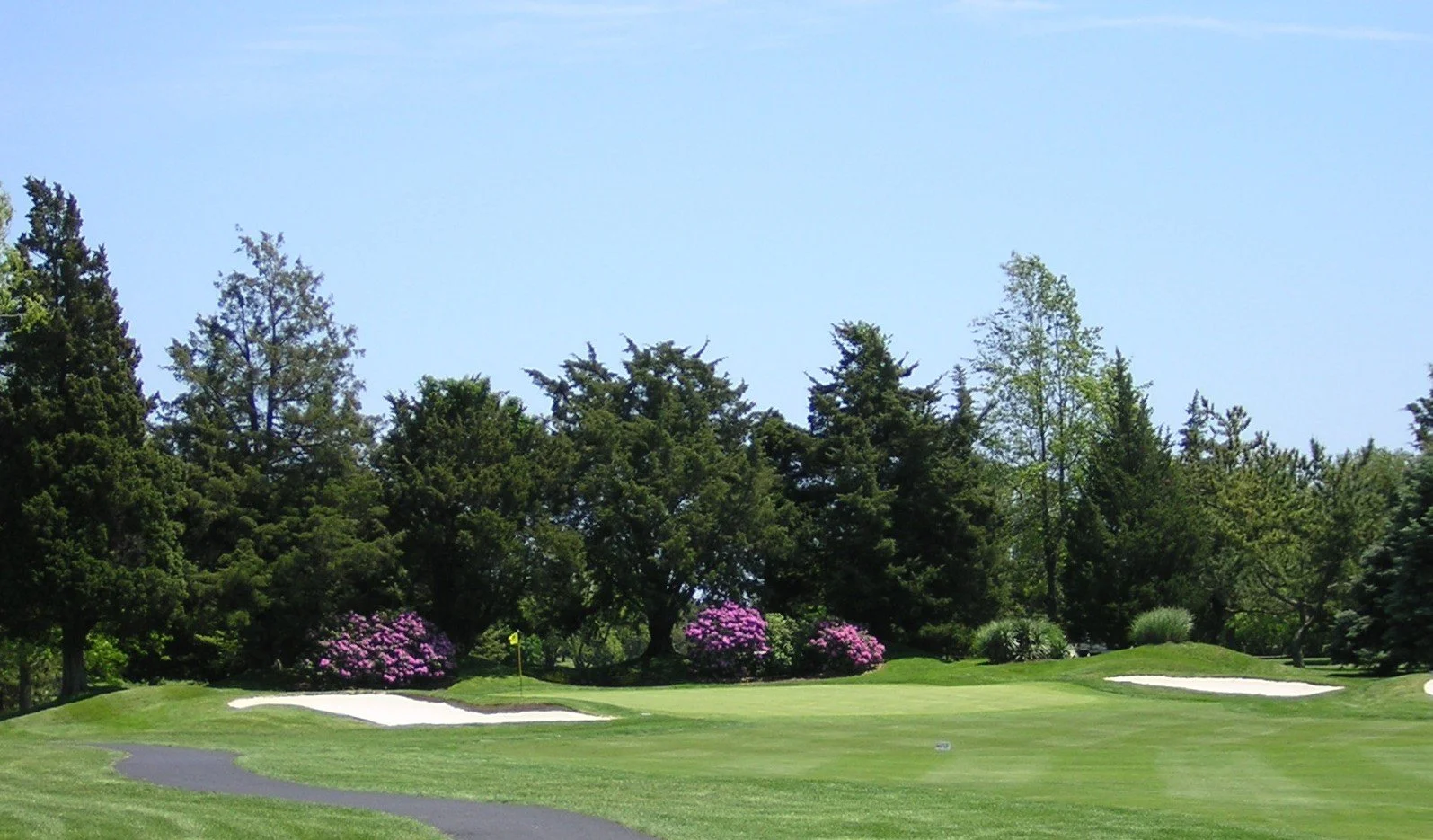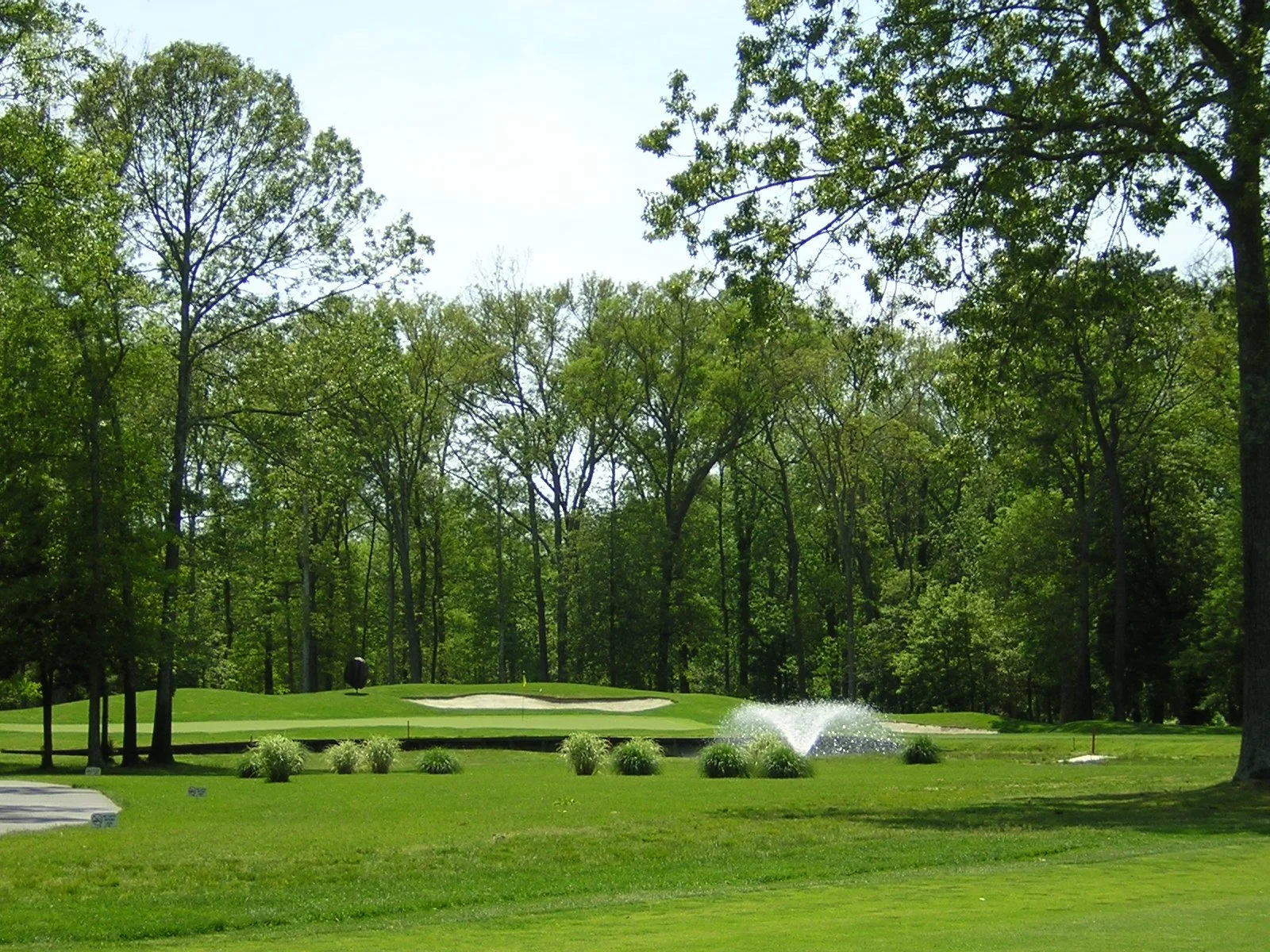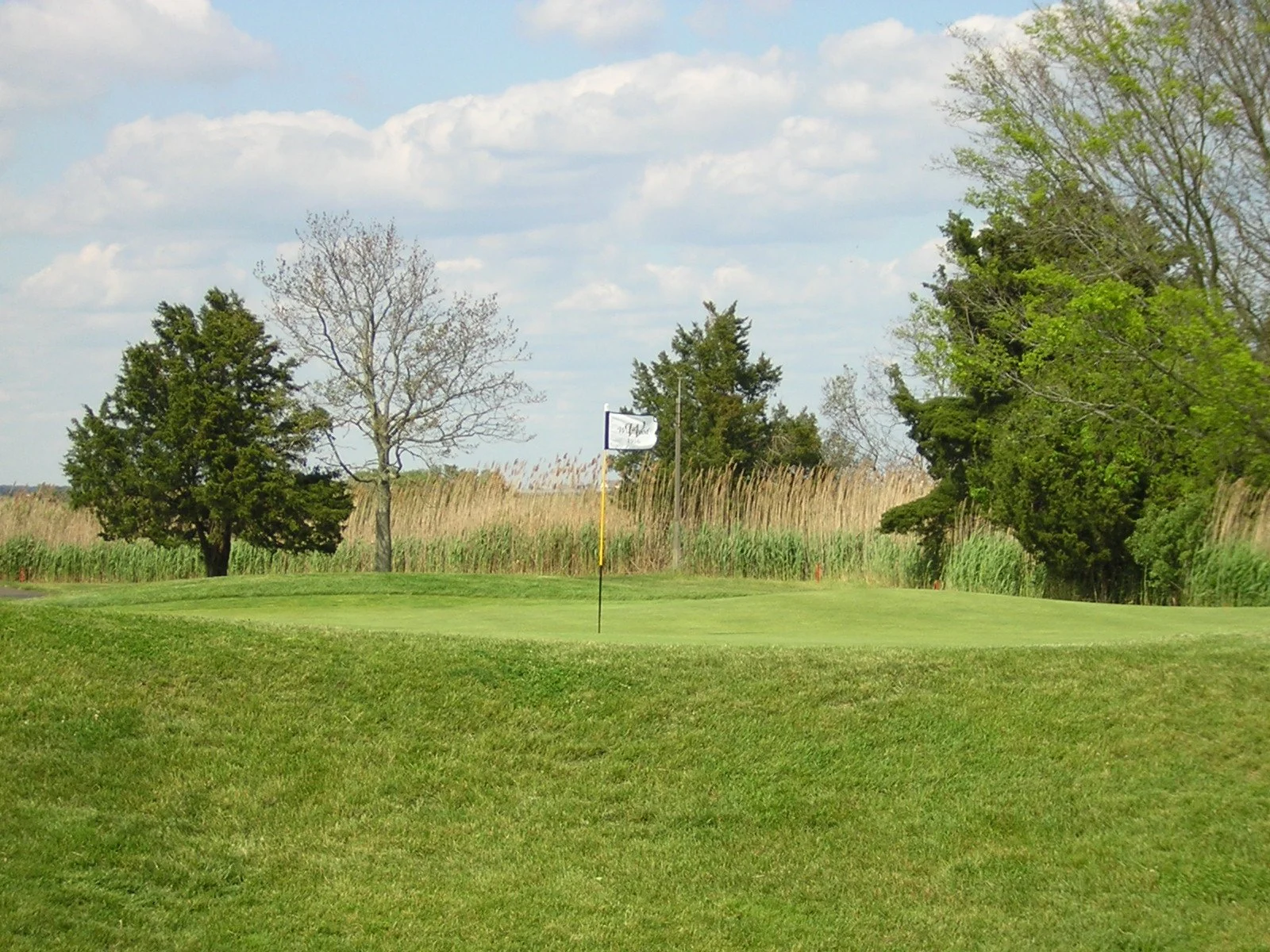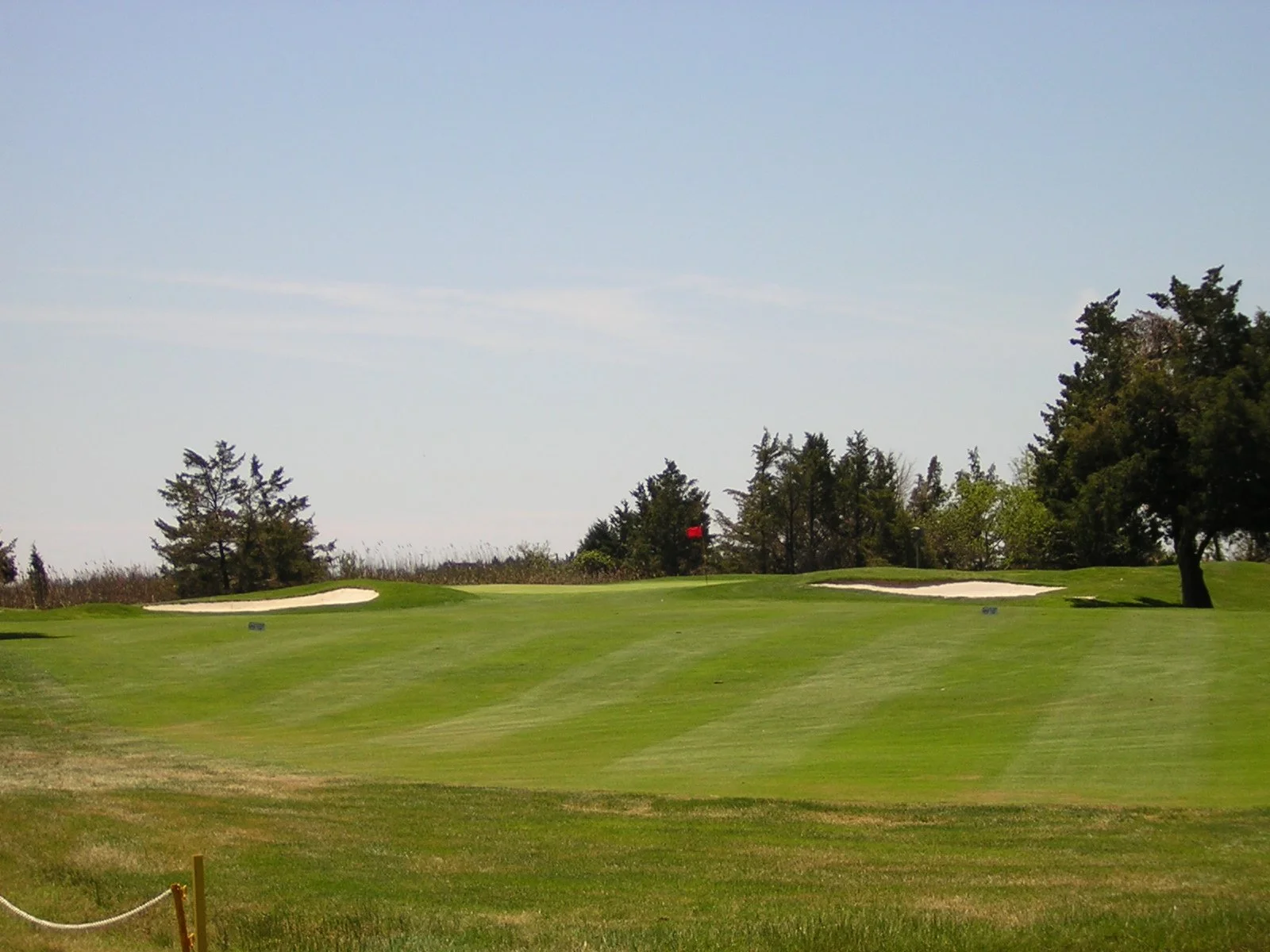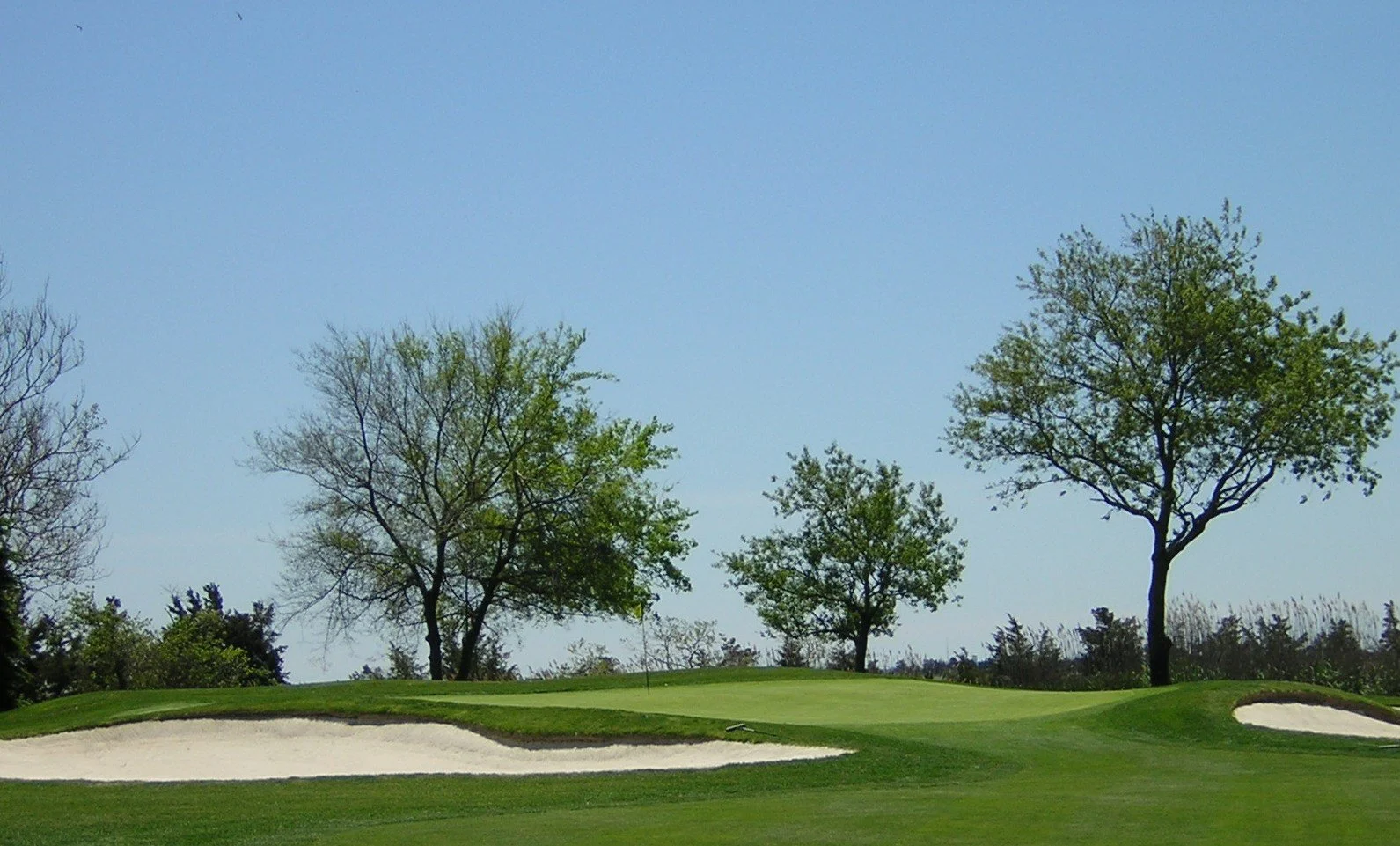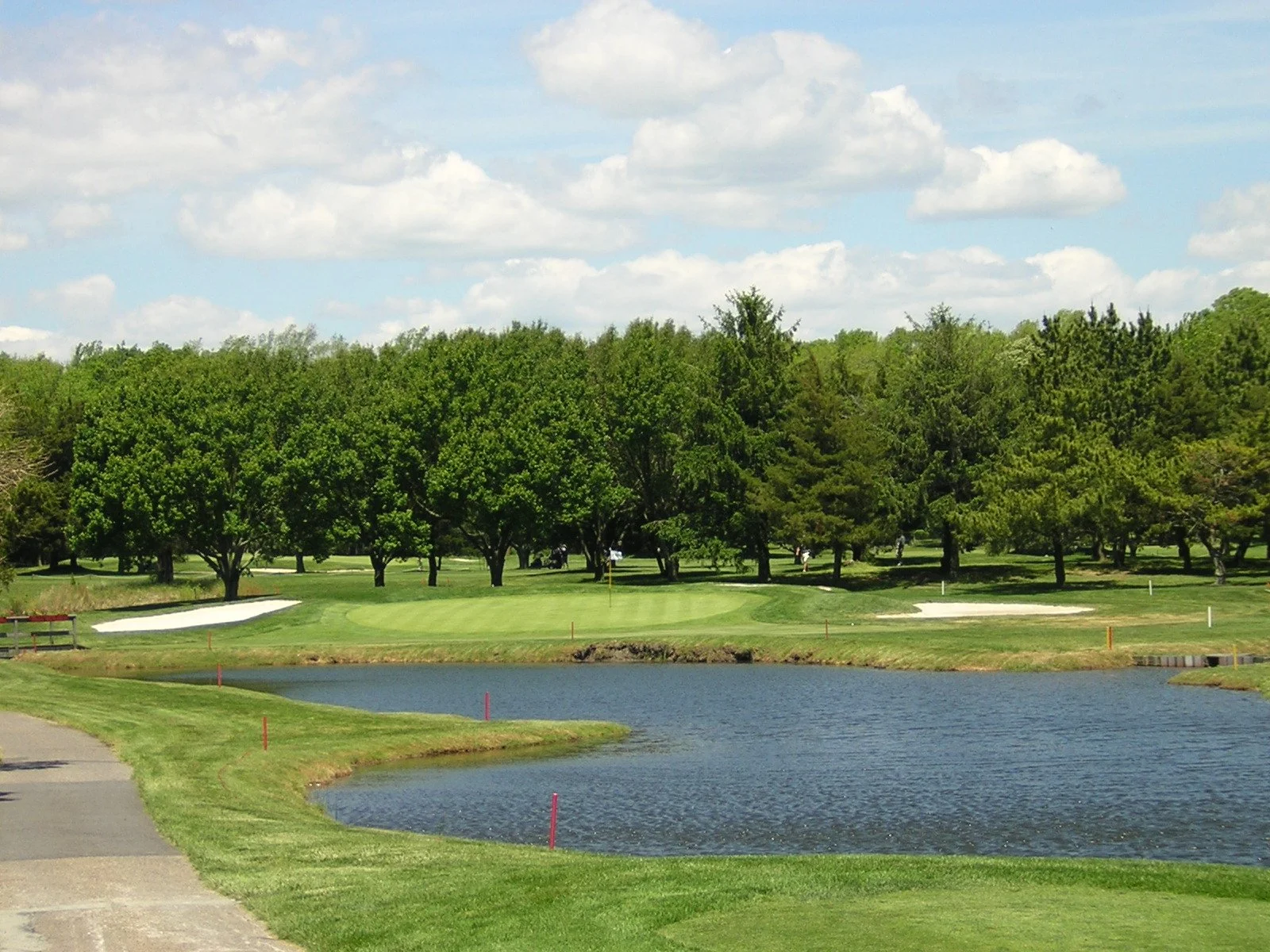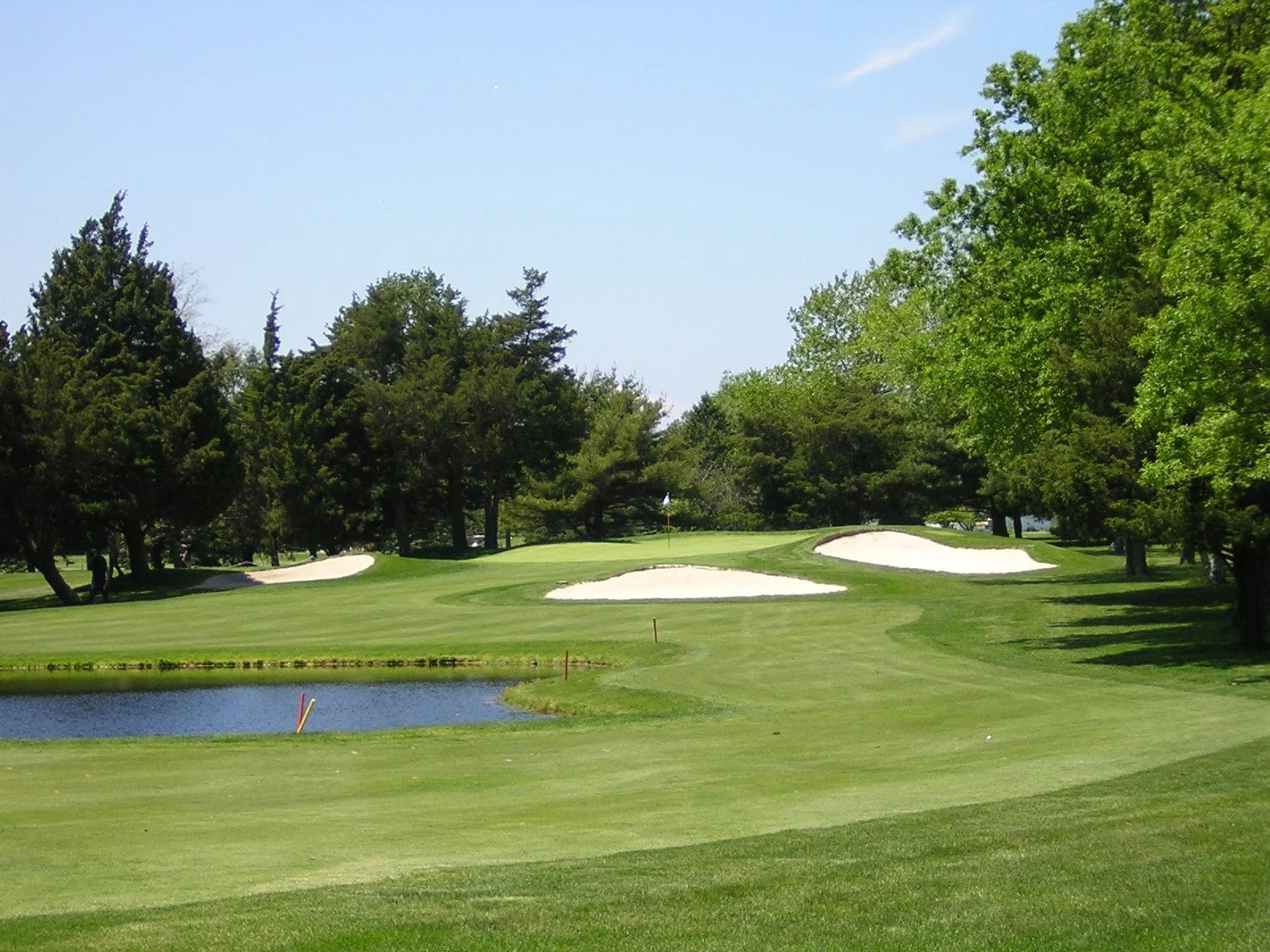The Shore Club (Formerly (WILDWOOD GOLF & CC)
Course Architects: Wayne E. Stiles, John Van Kleek (1924), Brian Ault (1995), Tyler Rae (2018-present)
Year Opened: 1916
Location: Cape May Court House, New Jersey
Slope: 137. Rating: 72.6
Par: 72
Yardage: 6.940
Hole-by-Hole: 1 - Par 4 440 Yds 10 - Par 5 562 Yds
2 - Par 4 385 Yds 11 - Par 3 164 Yds
3 - Par 4 391 Yds 12 - Par 4 440 Yds
4 - Par 4 424 Yds 13 - Par 5 491 Yds
5 - Par 3 224 Yds 14 - Par 4 366 Yds
6 - Par 4 419 Yds 15 - Par 4 367 Yds
7 - Par 5 519 Yds 16 - Par 3 176 Yds
8 - Par 4 435 Yds 17 - Par 4 376 Yds
9 - Par 4 366 Yds 18 - Par 4 395 Yds
Par 36 3,603 Yds Par 36 3,337 Yds
Website: www.myshoreclub.com.
HISTORY: The history of golf at the Jersey Shore certainly revolves around Atlantic City Country Club and Seaview Marriott Resort's Bay Course, but few people know that The Shore Club, formerly Wildwood Golf & Country Club is one of the oldest clubs in South Jersey.
That's right. Five men back in December of 1916 incorporated the club on "Old Joe MacKissick's Farm," which operated for roughly five seasons during the World War I era. When financial trouble almost spelled doom for the club, 10 men took control and re-named the venue Wildwood Golf Club.
Just a couple of years later, Wayne Stiles and John Van Kleek were brought in to design the course that would once again become WG&CC several years later. Stiles and Van Kleek designed many courses in their careers, including Brigantine Golf Links (N.J.), Taconic Golf Club (Mass.) and Nashua Country Club (N.H.). Built on the same land as the original layout, the club opened in the summer of 1923, holding an exhibition match between the flamboyant Walter Hagen and Joe Kirkwood.
As the club grew in stature, several invitational tournaments were held at Wildwood, including the first "Eastern States Inaugural Tournament" in 1924, which would later be known as the C.A. Gus Heil Memorial Tournament and the William H. Bright Memorial Trophy. Former PGA Tour player Al Besselink, who grew up in Merchantville, New Jersey, won the Bright Memorial in 1944. Called "Bessie" by the other tour players, Besselink won four PGA titles, not to mention dozens of events around the world.
The early 1950s were an interesting time for Wildwood G&CC. With the construction of the Garden State Parkway, four of the original holes were affected and, in 1953, longtime Head Golf Professional, Harry "Pop" Avery, retired after 28 years. Although a relative unknown at the time, Arnold Palmer, who was stationed at Cape May with the Coast Guard, made several stops
to the course during the summer of 1951. Palmer would later win the 1954 U.S. Amateur, turn professional and the rest, as they say, is history.
Following Avery's retirement, Ed DeBaufre served as his successor. DeBaufre held the position for 11 years, but was killed in a car accident in the spring of 1964. The following season, Ronnie Ward was named head professional after a four-year stint at Atlantic City CC and served 19 years. It was during this time that current assistant professional Terry Smick started his run of club championships. Smick, a 15-time club champ, won his first in 1981 and then added 10 straight starting in 1986. His last came in 1999.
When a new practice facility and driving range were added in 1995, the club brought in Brian Ault to build two new holes (11th and 12th). During this time, Fred Riedel became head professional. Riedel, who left for a few years to join a pair of nearby clubs, returned in 2004 and has remained loyal ever since. Riedel has since retired in 2021 as the Pro-Emeritus and Cam White is now the head golf professional.
"People find a home here and don't seem to want to go anywhere else," commented Riedel. "It's just a place where people can walk in and feel like they walked in the front door of their house. It's very welcoming. I wouldn't want to be anywhere else."
In 2017, the members approved the sale of Wildwood Golf & Country Club to The Shore Club, LLC, which was founded by a group of members. By doing so, it allowed the club to retire its debts and invest in multiple improvement programs.
With the new ownership, the club has made many improvements to the course, including rerouting the layout, adding almost 300 yards, adding new tees and repositioning bunkers and greens. All done by the watchful eye of Tyler Rae.
REVIEW: The opening hole at The Shore Club is certainly no gimme par four. In fact, it's one of the most difficult on the course and the longest four par on the layout. Bending slightly to the left, the play is down the left side, as this will open up your approach. Be wary, as trees flank both sides of the landing area. With a slick, back-to-front sloping green, your second must be below the hole or you'll run the risk of a three-putt.
Don't be fooled by the relatively short second hole. At 385 yards it's not long, but it has plenty of bite. The fairway is one of the tightest on the course, with trees lining both sides, so take dead aim, or you'll be playing out of the woods. The putting surface is minuscule and slick running from back to front, with sand on either side, so even with a short iron, accuracy rules the day.
The third hole, which runs along side the Garden State Parkway, is a wonderful par four of 391 yards in length. Although devoid of fairway sand, trees guard the right and out of bounds on the left. A medium to long iron will remain to a fairly small putting surface, that is slick, running from back to front. Any shot short, will roll back down the fairway due to the false front. One word of caution, do not short-side yourself on the left, as you’ll find a green-sized bunker.
Formerly the ninth hole and now the fourth is a sharp, dogleg-left par four, reaching 424 yards from the black tees. Playing uphill from the tee, you'll need a big blast to clear the corner, where tall trees guard the left side. The putting surface features a bunker on either side and mounds long and right. Beautiful vegetation behind the green gets plenty of action and with a deep flag, must be avoided at all costs.
The longest of the three par threes, the fifth is now 224 yards and is one of the most difficult holes on the course. You’re required to hit a long iron or fairway metal to reach the long and sloping putting surface that runs hard from back to front. A bunker right of the green will make for a difficult up and down.
A wonderful dogleg par four, the sixth is tight and goes right as it winds through the forest of trees. The S-shaped fairway features a pair of obstacles in the form of bunkers. Playing down the left side of the landing area is key in your approach to the green, as this will open up the hole. Be wary of missing right, as you'll find the fairway bunker or, worse, the trees. The putting surface, which is angled to the right, is guarded in the front and rear. The green slopes from back to front and to the right, so pin positioning must be taken into consideration.
At 519 yards, number seven is certainly not the longest par five in the region, but it most certainly is one of the most strategic. Nestled amongst the tall Jersey pines, this hole requires a precise tee ball down the right-center of the landing area, avoiding the fairway bunker to the right. At one time, a thick group of trees guarded the approach, as the hole doglegged to the left, but that his since been thinned out, allowing the player an option of getting home in two. Oh, you'll need to be spot on to have any shot at reaching this green, especially with the fronting pond. The putting surface is over 40 paces wide and slopes from back to front. Making a big number here is a definite possibility.
Doglegging sharply to the left, the eighth necessitates a drawing tee ball that must avoid the trees and out-of-bounds left and the thick rough right. The tight landing area is hard to negotiate, with many balls running through the fairway. This will set up a difficult approach to a long, narrow and two-tiered green. The slickness of the putting surface makes up for the lack of sand.
Often the shortest of holes tend to be the most difficult. Although only 366 yards long, the closing hole on the outward nine is a nerve-racking little gem that features a thick section of trees from tee to green on the left. Keeping the big stick in the bag is the proper play, as accuracy is of utmost importance. Find the fairway, avoiding the fairway bunker on the right and you'll have a little wedge remaining to a small, shallow and slightly elevated green. Miss long and you've squandered a shot or two.
The elements certainly come into play on the par-five 10th. Playing out towards the salt marshes and Jenkins Sound, as you look towards the Atlantic Ocean, this dogleg right is the longest hole on the course at 562 yards. Favor the left side off the tee, as the fairway is quite accommodating, unless you plan on getting home in two. Your second must be quite calculating, as the landing area narrows with the marsh left and water and OB right, choosing the correct course of action is not an easy one. The green is slightly raised with sand guarding the narrow entrance. The putting surface features several plateaus and can be quite tricky, especially when the wind is up and the match is on the line.
The first par three on the back side, number 11 requires a carry over a pond to a fairly large putting surface. The green is exposed to the elements, making club selection critical. The bail out area is left, as water guards most of the front, right and deep. No sand is needed, as you’ll have plenty of difficulty on this one, despite the shortness of the hole.
Another fairly long par four at 440 yards, twelve is a dogleg-left beauty. Unless the wind is blowing, your best bet is to keep the driver in the bag and play for accuracy, as a small pond at the bottom of the fairway is certainly in range. Another minuscule green awaits a mid- to long-iron approach. The putting surface, which runs hard from back to front, is guarded right and left with sand, so watch out.
You'll find out soon enough that you need to be very accurate at Shore Club or you'll be playing from places you never thought possible. This becomes evident on the short and enticing 13th. At just 491 yards, this par five is certainly reachable in two and even the finest player must be quite precise. This hole doglegs sharply to the right with a series of trees guarding the tight landing area on the right. The long hitter can cut the corner, leaving a long iron to the small, undulating green. A narrow creek cuts through the fairway at the 150-yard mark, making a layup difficult for the less fortunate player. Miss the putting surface left and your chances of getting up and down are slim and none.
With the salt marsh to the left, the 14th demands more accuracy than length. At 366 yards, take out a fairway metal or long iron to place your tee shot in play. Just a short iron or wedge will remain to another small putting surface. Be careful, as this green is fast and runs hard towards the front. A pair of bunkers will play havoc with any offline shot.
Similar in length, the 15th bends to the right and again, put the ball in play. Laying back off the tee will still leave just a short iron to a two-tiered green guarded by a pair of traps. A back pin is next to impossible to get close to. If you haven't learned your lesson so far, stay below the hole! This green is one of the most difficult on the course.
Your final par three, the 16th, is just 176 yards, but remember: this hole is exposed like the 11th and can be very difficult. Throw into the mix water virtually surrounding the entire green and you have a devilish little son-of-a-gun. Sand on either side of the long and narrow green makes your landing area real tight. You can miss long, but you won't make par.
The second-to-last hole at Shore Club is rated as the sixth-hardest on the course -- and rightfully so. At 376 yards, this one bends to the left, features a forced carry over a pond and possess a blind landing area with a pond hidden from view. Other than that, no big deal, right? Wrong. The long putting surface runs from back to front and features deep bunkers on either side, and let's not forget the stand of trees to the right of the green. That was my downfall!
The closer is a tough driving hole, as it plays straightaway towards the clubhouse. Just under 400 yards in length, the 18th generally plays directly into the wind, so you’ll need an extra club to reach the promised land. The putting surface is set off to the left with two bunkers on either side and a false front. Quite a wonderful finish.
OVERALL: The Shore Club is sometimes overlooked in discussions of golf at the Jersey Shore, and that's an error in judgment. Sure, Atlantic City, Hidden Creek and Galloway are some of the more sensational layouts in South Jersey, but The Shore Club is not far behind. "The course is extremely underrated," said Riedel. "When you first play it, it doesn't jump out at you as a great course, but at the end of the day, your score for the first time out reflects that it gave you a good test."
The Shore Club features wonderful conditioning, some of the quickest, tiniest and undulating greens in the area, tight tree-lined fairways with many doglegs, great views of the Jersey shore and, by the way, one challenging layout. "It's a shotmaker's course," said former club president Dave Burke. "You have to hit the ball straight and be somewhat precise with your irons going into the small greens." If there ever was a statement that rang true, that's it.
At 6,940 yards, The Shore Club has been strengthened by 226 yards and plays to a rating of 72.6, pretty daunting for a layout under 7,000 yards. However, the course only has a trio of par threes, so the length is deceiving. There are four sets of tees -- with overall length ranging from as little as 3,825 yards -- so all levels of play can enjoy this test. A great walking course, The Shore Club can tame even the best of players, due mainly to the ever-changing weather. "The conditions are almost never the same," said Riedel. "The wind blows from all different directions."
In these difficult economic times, membership at The Shore Club has remained strong with over 400 full-time and an additional 100 House or "Social" members.
What was created there almost 100 years ago is a first-class "golf" club. No swimming pool, tennis courts or the hustle and bustle of the boardwalk, just golf and an atmosphere that's unmatched in the region. "The Shore Club has been good to my family," said Burke, who grew up in the area. "It's been a great place to meet friends. You see folks from all walks of life and meet some very
interesting people. It's the friendliest group of people of any organization that I've ever been associated with."
Isn't golf, and life, supposed to be that way? I think so.




